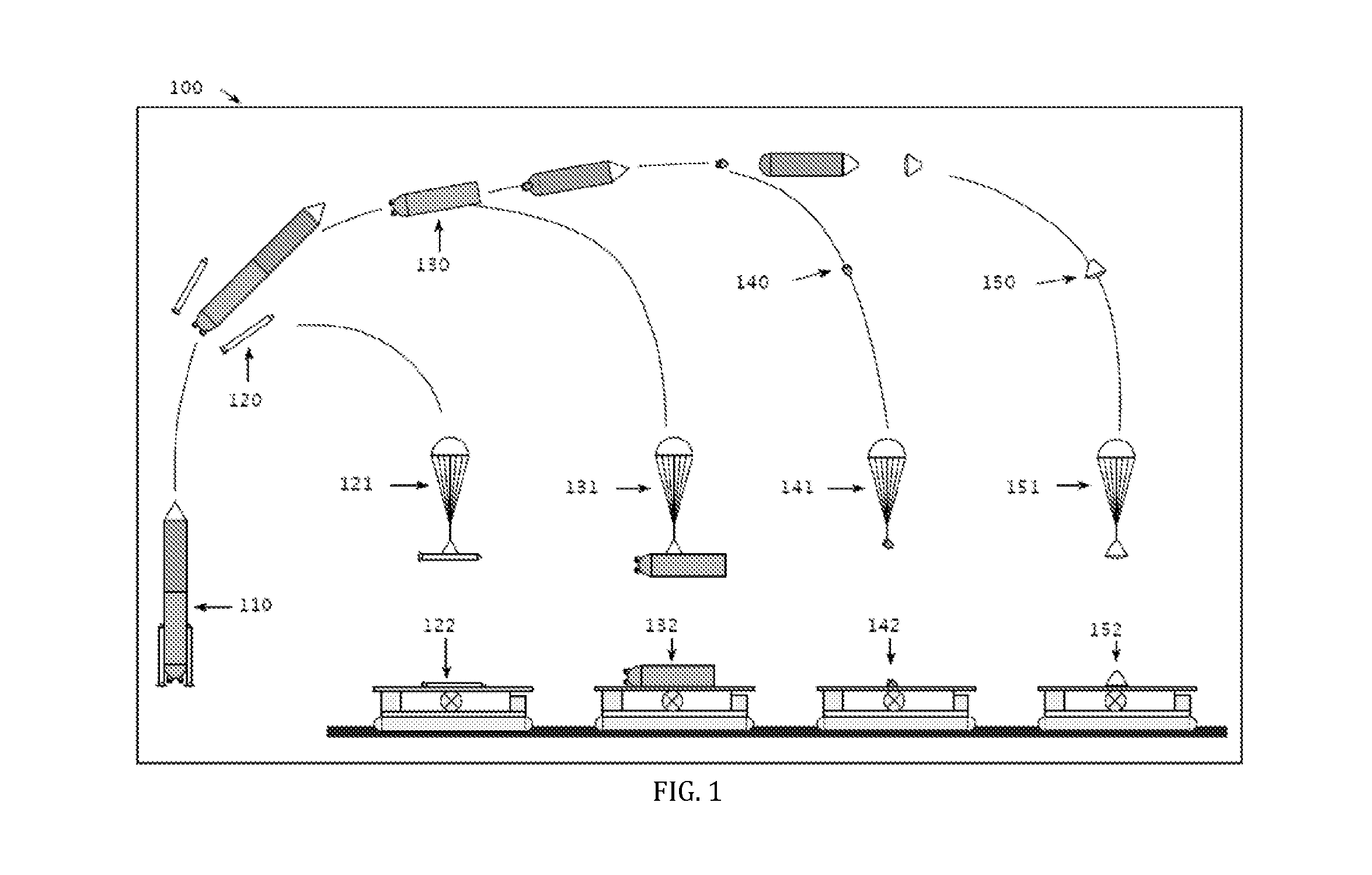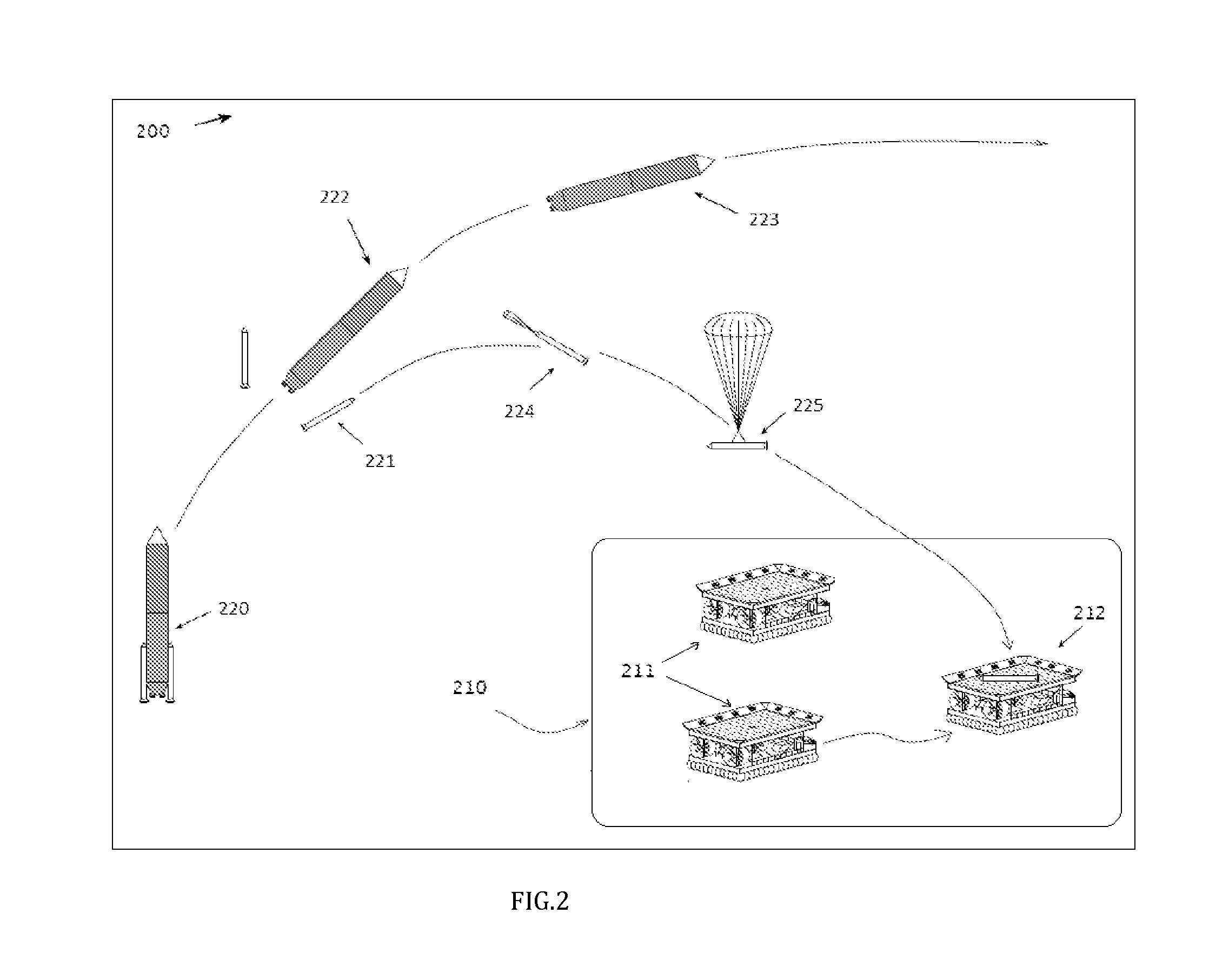Movable ground based recovery system for reuseable space flight hardware
a space flight hardware and reusable technology, applied in the field of low-cost reusable space launch systems, can solve the problems of reducing the payload capacity of the launch vehicle, increasing the gross-lift-off weight of the reusable system, salt water immersion of space flight hardware,
- Summary
- Abstract
- Description
- Claims
- Application Information
AI Technical Summary
Benefits of technology
Problems solved by technology
Method used
Image
Examples
Embodiment Construction
[0031]FIG. 1 shows a reusable space launch vehicle system 100 where significant elements of the launch vehicle 110 and spacecraft 150 are reusable. The reusable launch vehicle may comprise a fully reusable solid rocket booster 120, a fully reusable liquid rocket booster 130, or a partially reusable liquid rocket booster featuring a jettisonable engine pod 140.
[0032]In order to reduce the complexity of each reusable space flight hardware element, their respective recovery system will omit elements of guidance, navigation and control (GN&C) capability used for precision landing. Because any increase in the empty weight of a rocket launch system materially diminishes from its payload capability, a simple, lightweight landing parachute system to a heavier aerodynamic (wings) or propulsion (retro-rocket) based approach. Every electromechanical component required for active recovery guidance, navigation and control (GN&C) requires power. Electronics, batteries and actuators displace volum...
PUM
 Login to View More
Login to View More Abstract
Description
Claims
Application Information
 Login to View More
Login to View More - R&D
- Intellectual Property
- Life Sciences
- Materials
- Tech Scout
- Unparalleled Data Quality
- Higher Quality Content
- 60% Fewer Hallucinations
Browse by: Latest US Patents, China's latest patents, Technical Efficacy Thesaurus, Application Domain, Technology Topic, Popular Technical Reports.
© 2025 PatSnap. All rights reserved.Legal|Privacy policy|Modern Slavery Act Transparency Statement|Sitemap|About US| Contact US: help@patsnap.com



